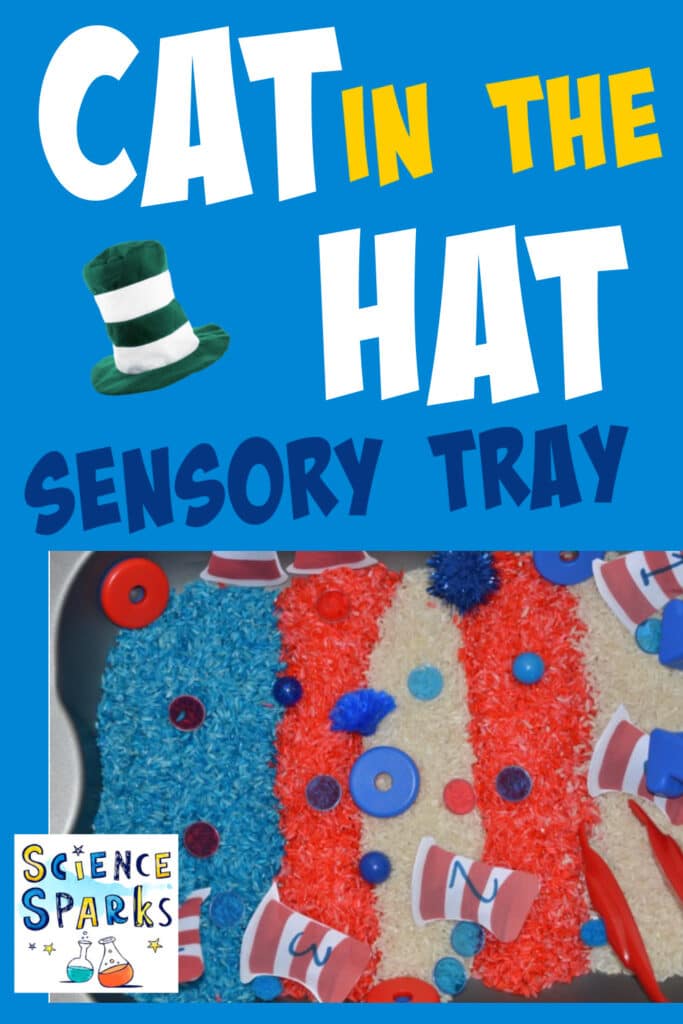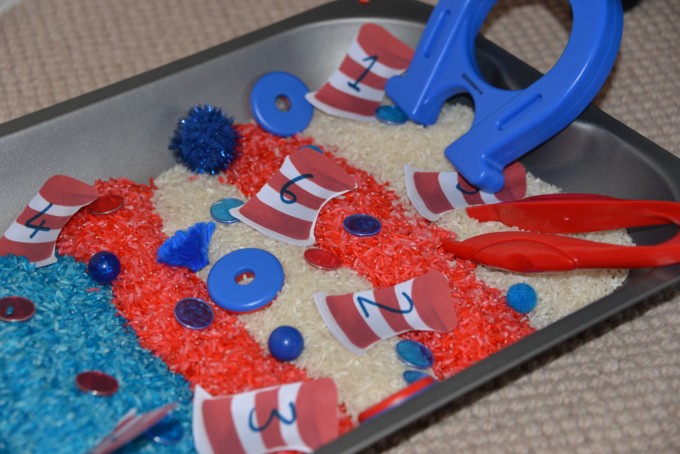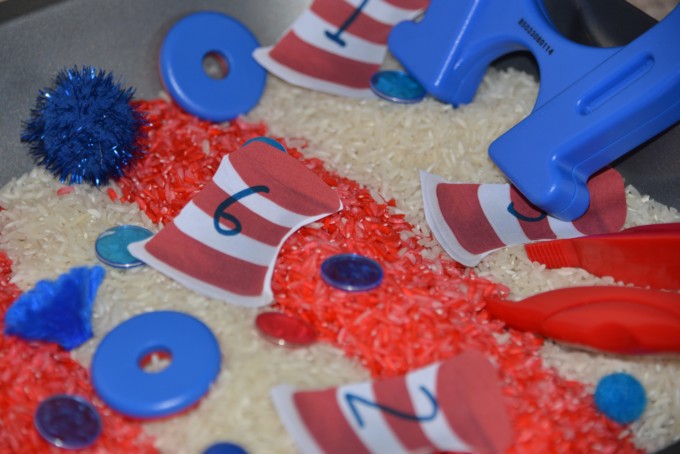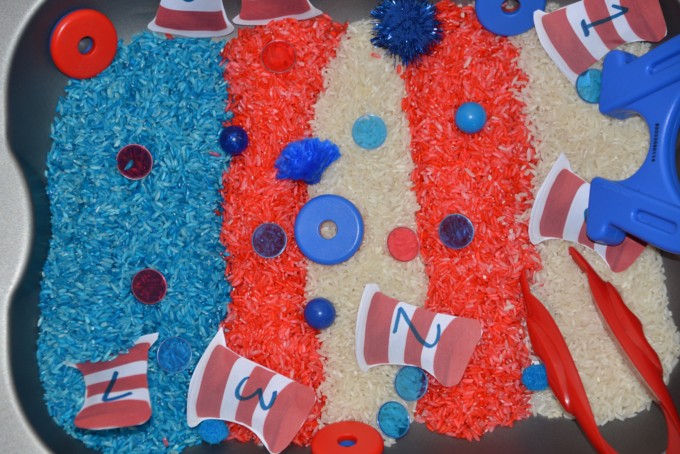Following on from our Lorax themed science ideas, I’ve got a fun Cat in the Hat sensory tray to share today. We used ours to explore magnetic and non-magnetic objects and for number practice, but you could add letters, spell words or count and sort items pulled out of the tray.
Easy Cat in the Hat Sensory Tray
What you’ll need:
Rice
Food Colouring
Sealable plastic bags
Magnets and magnet wand
Tweezers
Cat in the Hat cutouts
Magnetic balls and discs
How to colour rice
Place plain, cheap rice inside a ziploc bag, add a little food colouring and shake until all the rice is coloured.
Pour into a baking tray and leave to dry.
Once the rice was dry, I arranged it to look like a Cat in the Hat hat and added some small magnetic balls and discs as well as some printouts of the Cat in the Hat hat.
Sensory Tray Learning Ideas
Add magnetic and non-magnetic items to your tray and ask the children to sort the materials depending on whether they are magnetic or not.
Use the tray for fine motor skill practice and add small beads and pom poms for the children to pick up.
Add lots of small objects children can sort by colour, size or whether they are magnetic or not.
We used the numbers on the hats to find pairs of number bonds to 10.
Questions to think and talk about
Is the magnet attracted to all the items in the tray?
Is it easier to pick up a thick or thin item with the tweezers?
Do you have to squeeze the tweezers harder to pick up a smaller item?
Do the magnetic items have anything in common?
What happens if you hold two magnets together? Can you feel them attract and repel each other?
Magnetism – What is going on?
Magnets have two poles: a north pole and a south pole. The north pole of one magnet will repel (push away) the north pole of another magnet. The South Pole will repel another South Pole. Opposite poles are attracted to each other.
Magnets attract objects made with iron. Remember, Aluminium is not magnetic.
Links with English
Write a letter to the Cat in the Hat telling him about an adventure.
Make a list of magnetic and non-magnetic items.
Links to Maths
Count the number of magnetic and non-magnetic items.
Find out if there are more magnetic or more non-magnetic items.
Lay the magnetic items out in an array.
Create a tally chart.
More Cat in the Hat Activity Ideas
We love this Cat in the Hat inspired number line from Rainy Day Mum.
Little Bins for Little Hands has a lovely Cat in the Hat stacking activity.
Happy Toddler Playtime has a great Cat in the Hat paper plate craft.

Last Updated on February 29, 2024 by Emma Vanstone




Leave a Reply